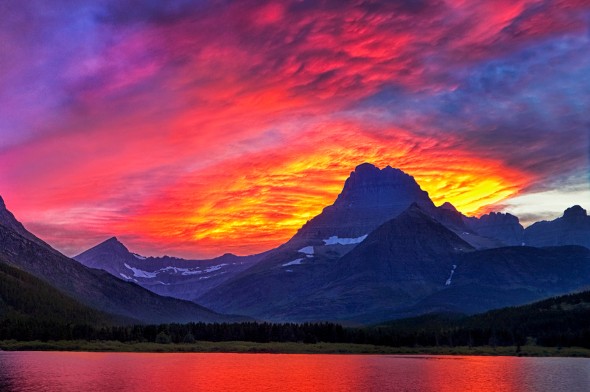Montana, the Treasure State, is home to some of America’s most spectacular landscapes. It’s a small state in terms of population, with a little over one million residents. In fact, Montana has just 6.8 people per square mile, compared to the U.S. average of 87.4 per square mile, according to the U.S. Census Bureau. So if you want room to spread your legs, Montana might be the place for you. Before you move, though, it’s a good idea to have a sense for the cost of living in the state.
If you are planning to move to another state, a financial advisor can help you create a financial plan for your goals.
Housing Costs in Montana
Being that Montana is one of the most sparsely populated states in the U.S., it should come as no surprise that its housing market isn’t especially strong. As a matter of fact, almost 50% of the homes in the state fall between $155,430 and $465,986, according to NeighborhoodScout. This and other factors has resulted in Montana holding a $386,354 median home value as a state.
Although two-thirds of Montana’s residents are homeowners, rentals in the state can offer some deals when compared with other states nationwide. In 2022, Apartment List data shows that a one-bedroom in Bozeman costs $1,750, but the same size apartment in Great Falls costs half as much ($795).

Utilities
According to 2021 data from the U.S Energy Information Administration (EIA), the average monthly energy bill in Montana was $97.84, well below the national average of $121.01. That’s not the lowest energy bill across the 50 states, but it’s certainly within the top 10.
Transportation
If you want to avoid having to own a car, moving to Montana might be a little bit of a struggle. There are exceptions, of course, as bigger cities typically have public bus service. In Missoula, the Mountain Line bus service is currently zero-fare. Bozeman’s Streamline bus is also free. The fare on Great Falls’ bus service costs a minuscule $1.
In general, though, Montana is a driving state. According to May 2019 data from GasBuddy, a gallon of gas in Big Sky Country goes for an average of $3.99, which is just below the $4.01 national mark. The average commute time in the state averaged 18.4 minutes, which is much shorter than the national average of 26.9 minutes, based on reports from the U.S. Census Bureau.
Food
Montana’s grocery prices are above average for a U.S. state. Compared to a national average indexed at 100, Montana’ groceries come in at 102.5, according to the Missouri Economic Research and Information Center.
Based on calculations by MIT, the living wage in Montana for a single adult with no children is $32,844 ($17.47 per hour). Of those wages, MIT estimates that $3,999 goes to food purchases.
Taxes
Montana has no sales tax, which is a huge long-term benefit. The state does maintain taxes on beer, liquor, wine and cigarettes, though.
Montana’s income tax system is progressive, with marginal income tax rates that range from 1.00% to 6.75%. As far as taxes on property go, the average effective property tax rate in Montana is just 0.83%, well below the national average of 1.07%. Rates range from 0.48% in Fallon County to 1.56% in Blaine County.
As of the beginning of 2005, Montana has no estate tax.
Education
If you want to go back to school in Montana or send your kids to a state school, you’re in luck. Based on reports from CollegeCalc.org, tuition at Montana’s public universities have an average cost of $7,334 for the 2020-2021 academic year. That works out to be $7,587 less than the national average.
Miscellaneous Cost of Living Facts

Montana is known as a place for outdoor enthusiasts. A seven-day vehicle permit for entrance to the renowned Glacier National Park will cost $20 per person ($35 per vehicle and $30 motorcycle). If you live in the area, you can get an annual pass for $70.
Tips for Managing Your Money
- Moving to a new state can have a big impact on your finances, and a financial advisor can be a real help in navigating those changes. SmartAsset’s free tool matches you with up to three financial advisors who serve your area, and you can interview your advisor matches at no cost to decide which one is right for you. If you’re ready to find an advisor who can help you achieve your financial goals, get started now.
- An easy way to improve your general financial standing is deposit your money with strong bank. Here are a few local options in Montana: Rocky Mountain Bank, Citizens Alliance Bank, Farmers State Bank, Opportunity Bank of Montana and The Bank of Commerce.
Photo credit: ©iStock.com/AndrewSoundarajan, ©Apartment List, ©iStock.com/edb3_16
